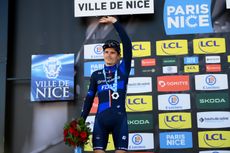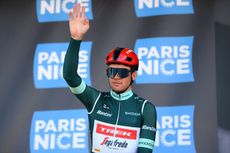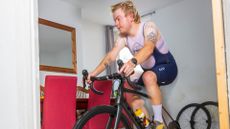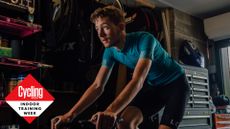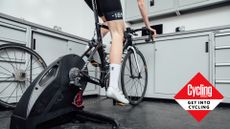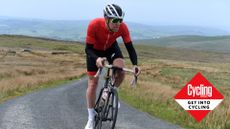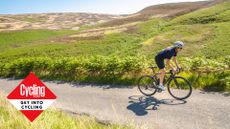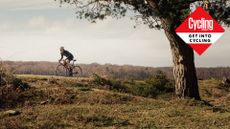Cycling training plans: for beginners, intermediates and racers
Get into cycling, get fitter, or ride faster with our cycling training plans, in partnership with Alzheimer's Research UK
- (opens in new tab)
- (opens in new tab)
- (opens in new tab)
- Sign up to our newsletter Newsletter
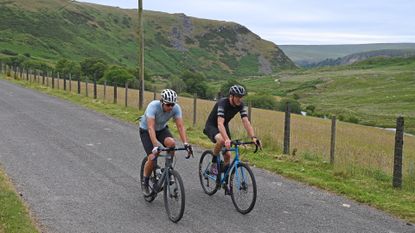

We've teamed up with Dig Deep Coaching to present three cycling training plans for fitness gains; one for beginners, one for riders looking to improve their endurance for longer rides, and one for racers looking for that competitive edge.
No matter who you are – but especially if you're riding to raise money for Alzheimer's Research UK – these 10-week training plans for fitness will give you the structure, motivation and know-how to get fitter, healthier, and stronger on the bike.
The training sessions incorporate intervals based upon maximum heart rate, or functional threshold power - so you can train using a heart rate monitor or power meter. If you don't have access to either, you can still take part using perceived exertion, which you can learn more about further down this page.
Cycling training plan for beginners
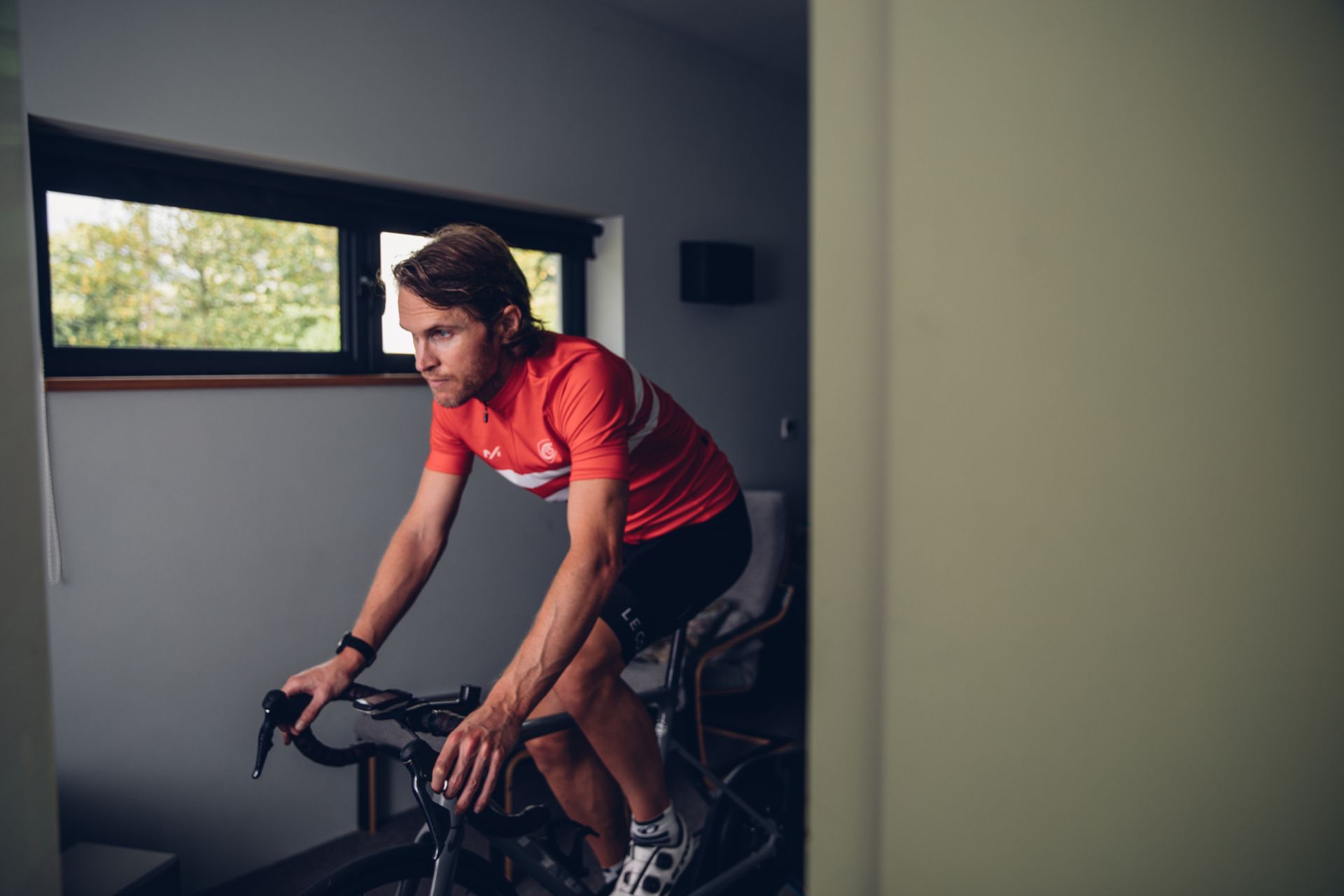
Our beginner cycling training plan is designed for people who are relatively new to the sport and looking to take on a challenge to build fitness and improve overall health.
The idea of this fitness plan is to get you to point where you can ride at a consistent pace for around three hours. The first five-week block will get you started with some low-intensity workouts, building into the second half of the programme and some longer and higher-intensity sessions.
Overall you'll need to commit around 6.5 to 8 hours of exercise per week, which includes some sessions off the bike to work different muscle groups and reduce the chance of injury.
Start now: Cycling training plan for beginners
Cycling training plan for endurance
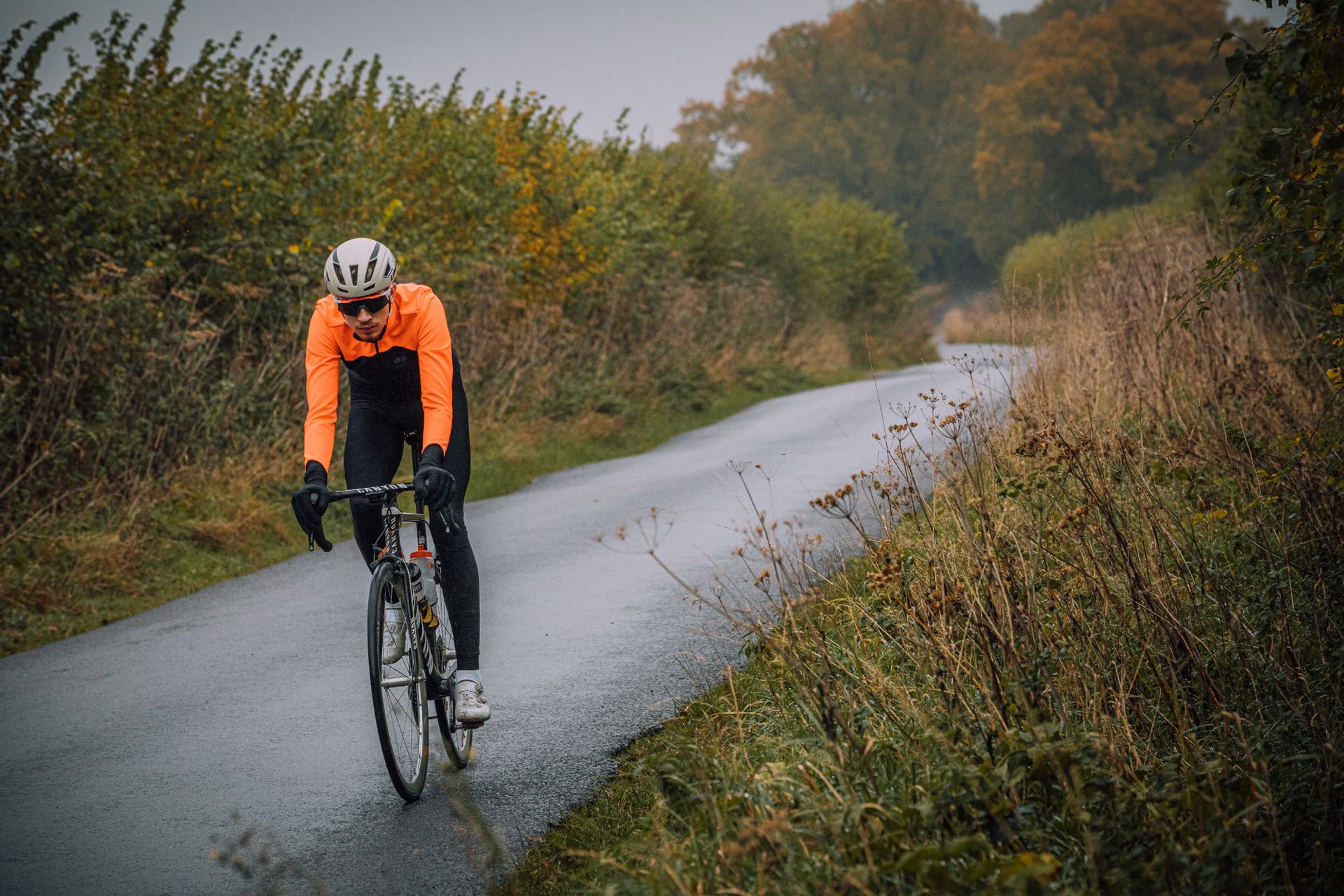
This fitness cycling plan is for riders looking to build up their stamina for a long-distance sportive or just for bigger weekend rides of five hours or more.
The 10-week training plan will build your aerobic base, starting with muscular strength and a focus on cycling cadence, which will boost your resistance to fatigue. The second half of the programme uses low-intensity sessions to improve your body's ability to use fat as a power source, and then higher aerobic efforts to improve overall fitness.
You'll need to commit around 8-10 hours per week to complete the programme, which includes a small amount of off-bike cross-training.
Start now: Cycling training plan for endurance fitness gains
Cycling training plan for road racers
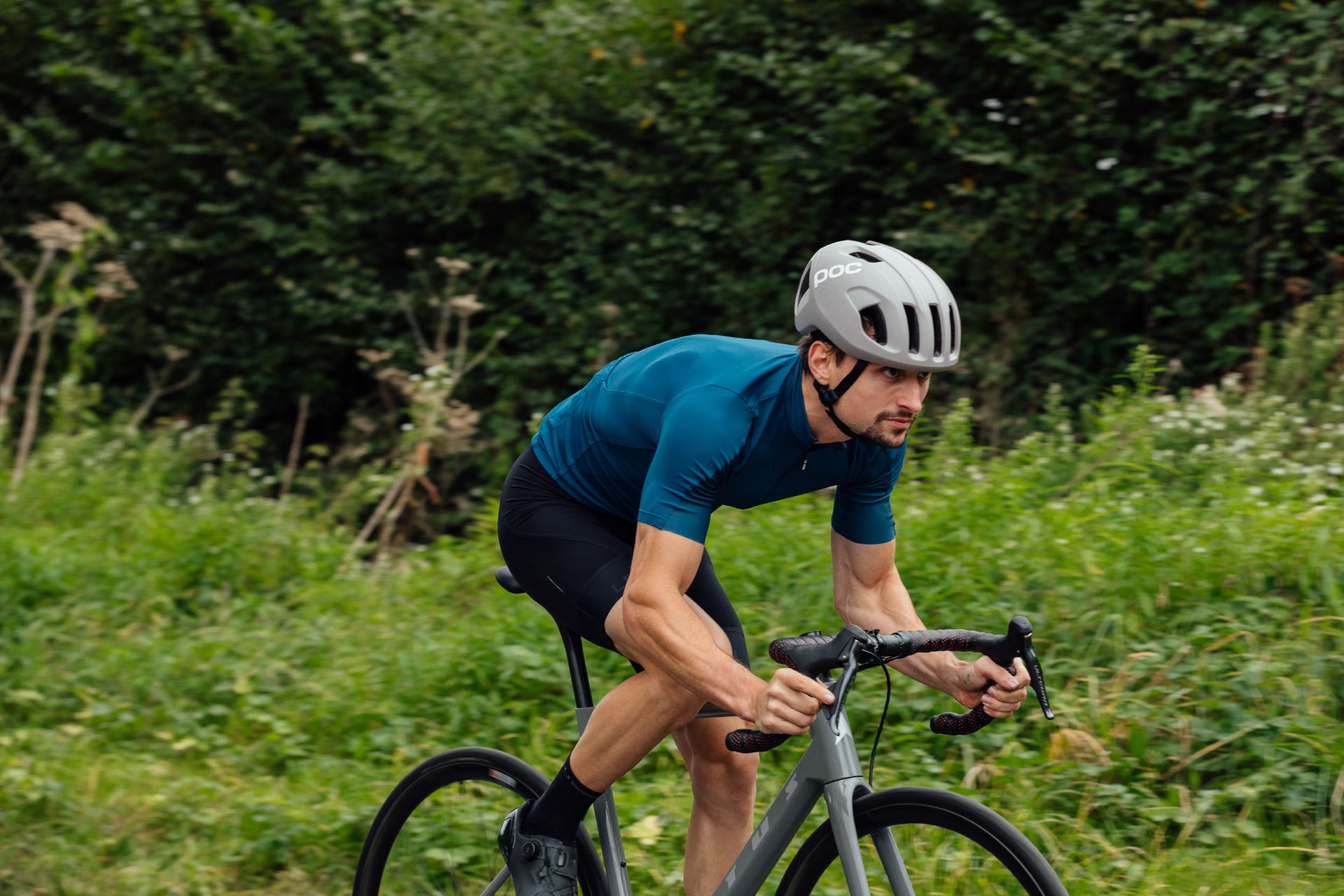
If you're getting started in road racing and targetting events of 30-90km, then this one is for you. It'll also be useful if you're an established racer whose fitness has stagnated.
This cycling fitness plan assumes that you're already a cyclist with at least a year of consistent training behind you; you'll also need to be confident riding fast in a bunch.
The first half of the 10-week programme focuses in particular on changes of pace, which are vital in racing whether for responding to an attack or tackling tough sections of terrain. It'll also improve your anaerobic threshold.
In the last five weeks you'll work delivering short, explosive bursts and recovering quickly. This will allow you to produce strong efforts even when tired. You'll also work on your VO2 max power and anaerobic capacity.
This programme isn't about big miles; too much volume will just make you fatigued, so the priority is to target specific race intensities in a strategic way.
Start now: Cycling training plan for road racers
How to use these cycling training plans for fitness gains
Understanding the intensities
During each training day, each effort has a prescribed ‘Zone’ (e.g. Z1, meaning Zone 1). If you do not have a heart rate or power meter, you can also use Rating of Perceived Exertion (RPE) to judge intensity. The Borg scale, from one to 10, provides a guide to how these effort levels should feel:
| Perceived exertion | Effort level |
| 0 | Nothing at all |
| 0.5 | Extremely easy |
| 1 | Very easy |
| 2 | Easy |
| 3 | Moderate |
| 4 | Somewhat hard |
| 5 | Hard |
| 6 | Getting harder... |
| 7 | Very hard |
| 8 | Starting to hurt |
| 9 | Arrgggh... |
| 10 | Extremely hard |
If you have a heart rate (HR) monitor and/or power meter, we suggest finding out your cycling training zones. We recommend Andrew Coggan’s training levels, explained on the table below.
To find your functional threshold HR and power (needed to develop your zones), you will need to complete the following procedure:
After warming up, perform an all-out 20-minute effort, either inside on a turbo or outside on a quiet road. This effort is similar to a time trial effort. Once you have your average HR and power number for this 20-minute test, use this number as your 100 per cent threshold figure. Take your average power for the 20 minutes and multiply by 0.95 (e.g. 225W average x 0.95 = 209W FTP). This number is your Functional Threshold Power — and your zones are based on a percentage of this figure.
| Zone | Name | Average power (% FTP) | Average HR (% FTP HR) | Perceived exertion | Description |
| 1 | Active Recovery | <55% | <68% | <2 | "Easy spinning" or "light pedal pressure", i.e. very low level exercise, too low to induce significant physiological adaptations. Minimal sensation of leg effort. Relaxed breathing. |
| 2 | Endurance | 56-75% | 69-83% | 3-4 | "All day" pace, or classic long slow distance (LSD) training. Sensation of leg effort/fatigue generally low. Breathing is a little heavier than in Zone 1. |
| 3 | Tempo | 76-90% | 84-94% | 5-6 | More frequent/greater sensation of leg effort/fatigue than at Zone 2. Requires concentration to maintain. Breathing deeper and more rhythmic than in Zone 2. Breathing too hard to chat. |
| Sweet-spot | Sweetspot | 84-97% | 88-100% | 6-7 | Between high Zone 3 and low Zone 4. For riders who aren’t using a power meter, I’d call sweetspot “medium hard”. It’s just below your 25-mile TT race pace, but harder than a traditional tempo workout. |
| 4 | Lactate Threshold | 91-105% | 95-105%(may not be achieved in first few efforts) | 7-8 | Similar to TT race effort. Relentless feeling of leg effort/fatigue. Breathing too hard to say more than the odd word or two. Mentally very taxing to maintain. |
| 5 | VO2 Max | 106-120% | >106%(may not be achieved in first few efforts) | 8-9 | The maximum effort you can sustain for three to eight minutes. Intended to increase VO2max. Severe leg effort/fatigue. 'Ragged' breathing; unable to speak.NB: Average heart rate less useful as a metric, as HR will be rising throughout the interval. |
| 6 | Anaerobic Capacity | N/A | N/A | 10 | Ultra-high-intensity intervals of 10-30 seconds, designed to increase anaerobic capacity. Flat-out; no holding back. Heart rate of limited use. |
The above is based on both the Borg scale of intensity and the training zones developed by Andrew Coggan.
Glossary
Understanding the terms used within these training plans:
Cadence (rpm): the number of revolutions of the crank per minute — the rate at which a cyclist is pedalling/turning the pedals. If you do not have a cadence sensor, then simply think in terms of ‘medium’ (85-95rpm), which should feel natural and normal with no increase in upper body movement; ‘high’ (95-120rpm) is often described as ‘spinning’ — it feels out of your comfort zone and may cause you to bounce slightly in the saddle and breathe at a faster rate.
Threshold Efforts: The term ‘threshold’ means the upper limit of the effort level you can sustain for the period requested. ‘Lactate threshold’ or ‘LT’ refers to the byproduct of anaerobic exercise — the harder your effort, the more lactate accumulates in your blood. The point at which lactate begins to accumulate more quickly than it can be processed is your LT or, in riding terms, the fastest pace you can maintain for 20-40 minutes.
Tempo: Tempo is an intensity often referred to as ‘hard aerobic’ training — a ride that requires more concentration and effort than regular endurance riding. The term tempo means a consistent ‘solid’ effort, suitable for periods of 20 minutes to one hour.
Aerobic Ride: This is generally a short ride (one hour or less) at low intensity. It works your aerobic system without putting too much training stress. Typically, this is a training session that can be done either indoors or on the road. Easy!
Endurance Ride: These Zone 2 endurance rides are carried out at a lower intensity but for longer durations, so they build your ability to perform exercise for prolonged periods of time. Levels of fatigue post-ride will be higher than that of the aerobic training sessions. These rides are normally longer than 1hr 30min.
Cross Training: Cross training describes another activity that’s not cycling: a range of activities either outside, at home or at the gym. Mixing up your activities allows you to work different muscle groups while giving your main cycling muscles a break.
Slow Tension Efforts: These focus on building your overall strength on the bike. We all know strength plays a big part in cycling fitness, and using strategic on-the-bike strength workouts we can maximise this essential component of performance. Generally, these efforts are completed at a low cadence, below 70rpm, and at a moderate intensity.
Endurance Fatigue Resistance: Enhancing aerobic fitness by developing your base endurance, these workouts recruit slow-twitch muscles fibres and train the body to use fat as a fuel source. This session has the additional benefit of teaching your body to work hard while fatigued. Make sure you hit the required duration.
VO2 Max: These is maximal aerobic intensity, lasting between two and five minutes. These intervals are intended to increase VO2max — your maximum rate of oxygen uptake. (Note: It takes a minute or two for heart rate to reach its VO2max level, so do not rely on average HR in these intervals.)
Burst: A burst is a short acceleration out of the saddle, intended to mimic a short/intense change of pace. This is not a full-out sprint; it is more like an effort to jump on to a passing wheel or accelerate over the top of a hill. After the burst, return to a solid steady state effort.
Tolerance Efforts: These efforts develop your capacity to endure prolonged high intensity without fading. This is achieved by completing short durations at a high intensity to accumulate a high lactate state, followed by a short recovery period, inducing oxygen debt and speeding up recovery.
Cycling Weekly provides these training plans in collaboration with Dig Deep Coaching – a global coaching company that works with athletes of all levels across road, track, cyclo-cross and MTB. Whether you are taking part in your first ever Gran Fondo or aiming to compete in the professional peloton, Dig Deep Coaching offers personal coaching to help you build your training around your lifestyle and make sure every pedal stroke counts. Learn more about Dig Deep Coaching by signing up to its Training Tips & Advice mailing list HERE, or follow Dig Deep Coaching on Facebook, Twitter and Instagram.
If you would like a digital version of your chosen Cycling Weekly training plan, with smart-trainer-ready sessions, please contact Dig Deep Coaching via this link here.

Thank you for reading 10 articles this month* Join now for unlimited access
Enjoy your first month for just £1 / $1 / €1
*Read 5 free articles per month without a subscription

Join now for unlimited access
Try first month for just £1 / $1 / €1

I’ve been hooked on bikes ever since the age of 12 and my first lap of the Hillingdon Cycle Circuit in the bright yellow kit of the Hillingdon Slipstreamers. For a time, my cycling life centred around racing road and track.
But that’s since broadened to include multiday two-wheeled, one-sleeping-bag adventures over whatever terrain I happen to meet - with a two-week bikepacking trip from Budapest into the mountains of Slovakia being just the latest.
I still enjoy lining up on a start line, though, racing the British Gravel Championships and finding myself on the podium at the enduro-style gravel event, Gritfest in 2022.
Height: 177cm
Weight: 60–63kg
-
-
 Closing the gap: David Gaudu emerges from Paris-Nice more confident than ever before
Closing the gap: David Gaudu emerges from Paris-Nice more confident than ever beforeThe Groupama-FDJ rider finished second overall at the Race to the Sun, but gained more than just the result
By Adam Becket • Published
-
 Goodbye lime: We need to talk about the Tour de France green jersey
Goodbye lime: We need to talk about the Tour de France green jerseyThere's change afoot at ASO's French races, with the combativity colour also undergoing a revamp
By Adam Becket • Published
-
 Kickstart your riding with our cycling training plan for beginners
Kickstart your riding with our cycling training plan for beginnersReady to get fit and healthy through cycling? Then this is the plan for you! In partnership with Alzheimer's Research UK
By Anna Marie Abram • Published
-
 All the essentials to get started cycling indoors (on a budget – or not)
All the essentials to get started cycling indoors (on a budget – or not)Indoor cycling is a fast, efficient way to get fit, here is all you need to get started and beyond
By Luke Friend • Published
-
 Should I be riding with pedals I can clip into? Here's our guide on how to cycle with 'clipless' pedals
Should I be riding with pedals I can clip into? Here's our guide on how to cycle with 'clipless' pedalsLearning to cycle clipped in is a rite of passage for any cyclist, these tips will help make the transition from flat pedals to clipless as seamless as possible
By Michelle Arthurs-Brennan • Published
-
 Suffering with clunky bike gears? Follow our simple guide to make your shifting smooth again
Suffering with clunky bike gears? Follow our simple guide to make your shifting smooth againFollow our step-by-step guide on how to adjust your bike gears
By Luke Friend • Published
-
 'Will cycling change my body shape?' – you asked Google and we’ve got the answer
'Will cycling change my body shape?' – you asked Google and we’ve got the answerNew to riding bikes and worried your new found pedal pushing habit will turn you into the incredible hulk? We've got the answers...
By Michelle Arthurs-Brennan • Published
-
 Six things I wish I'd known as a beginner cyclist
Six things I wish I'd known as a beginner cyclistEveryone's a beginner at some stage. Here are six things to bear in mind if you're looking at getting out on your bike
By Tom Thewlis • Published
-
 Ask a cycling coach: “I’ve not cycled in years, how do I get from the couch to 30 miles?”
Ask a cycling coach: “I’ve not cycled in years, how do I get from the couch to 30 miles?”Want to experience life on two wheels, but don't know where to start? Here's our top tips for getting you rolling
By James Spragg • Last updated
-
 Why cycling is great for your legs, lungs, immune system and mind, plus 11 other great benefits of life on two wheels!
Why cycling is great for your legs, lungs, immune system and mind, plus 11 other great benefits of life on two wheels!If you're considering joining the world of cycling, here are some good reasons to get on your bike this year
By Michelle Arthurs-Brennan • Last updated
